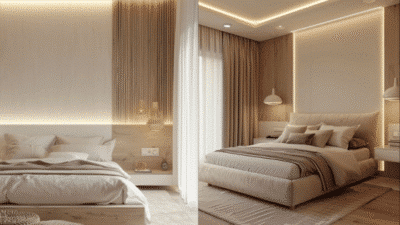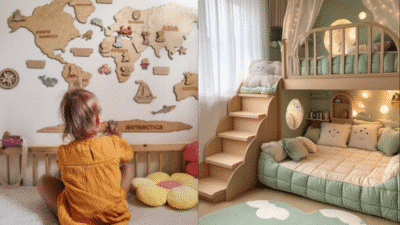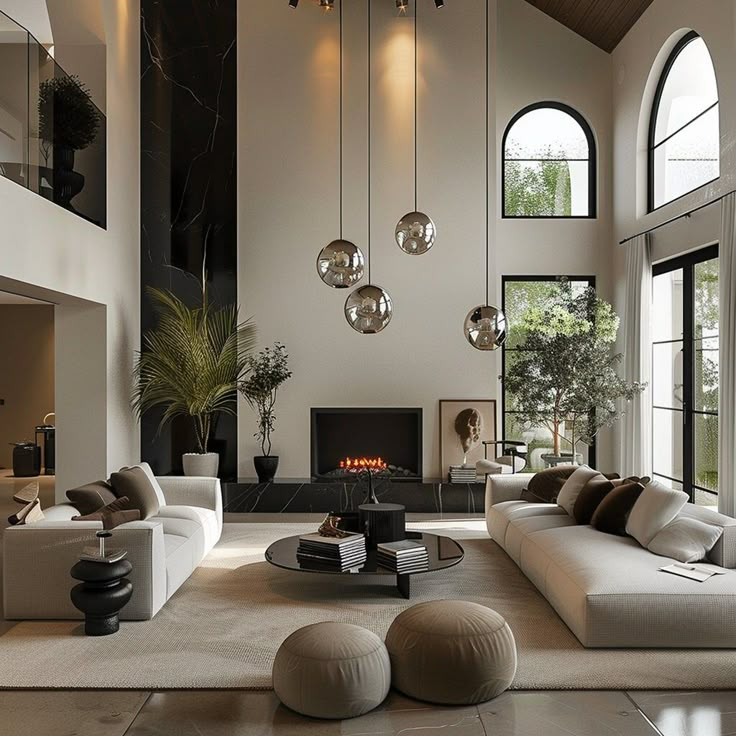
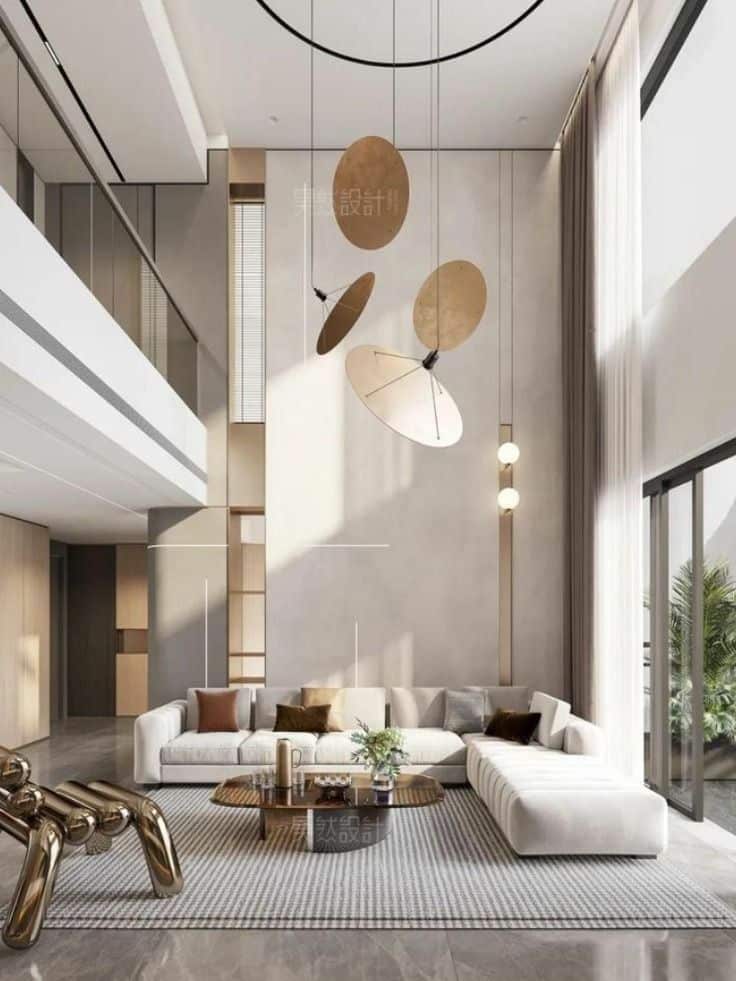
Creating a comfortable and stylish living room is easier than many think. The key to great living room design is balancing comfort, functionality, and aesthetics to fit the space and the person’s lifestyle. A well-planned layout with the right furniture and lighting can transform any room into a welcoming area.
Different design styles, textures, and accessories help personalize the space while keeping it practical. Small changes, like choosing the right color scheme or adding smart storage solutions, make a big difference. This article will explore ideas that work for all kinds of living rooms, from cozy to modern.
Key Takeways
- Balance style and function to create a comfortable living room.
- Use lighting and furniture arrangement to enhance the space.
- Personal touches and smart storage improve usability and look.
Fundamental Principles of Living Room Interior Design
A well-designed living room balances space, color, and purpose. It considers how furniture fits, which colors work together, and how daily use shapes choices. This section focuses on practical ways to plan and create a comfortable, stylish living space.
Understanding Space and Layout
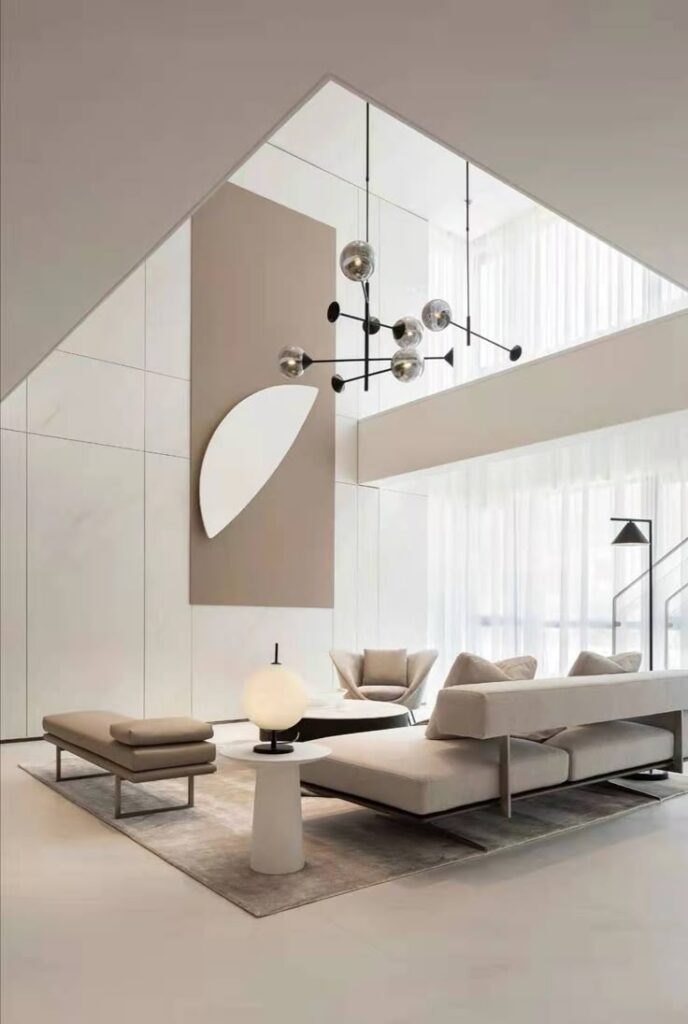

Space and layout are the foundation of any living room design. A good layout makes sure furniture fits without crowding the room. It should allow for easy walking paths and clear zones, like seating and entertainment areas.
Measuring the room helps decide furniture size and placement. Using a floor plan or tape measure ensures pieces fit well. Grouping furniture around a focal point, such as a fireplace or TV, creates a natural flow. Avoid placing large furniture too close to doorways or windows to keep the space open.
Setting a Cohesive Color Palette


Choosing the right colors sets the mood in the living room. It is important to pick a palette that blends well and feels balanced. A common approach is to use one main color, one or two accent colors, and a neutral base.
Neutral colors like beige, gray, or white often serve as the base. Accent colors add interest and personality to the space. Colors can be added through furniture, rugs, pillows, and artwork. It helps to test paint samples or fabric swatches in natural light before deciding.
Balancing Functionality and Aesthetics

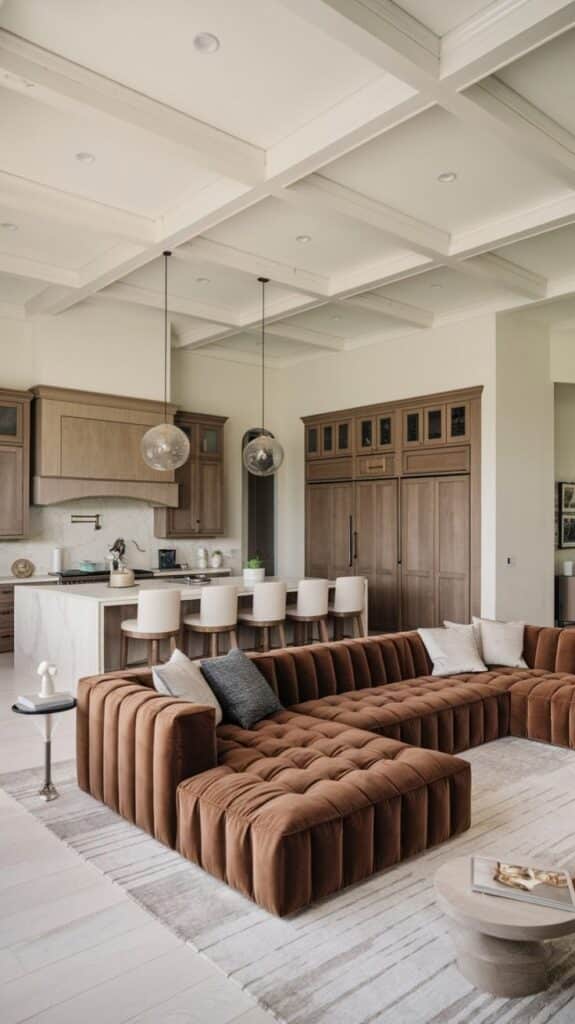
Living rooms should look good and serve daily needs. Functionality includes comfortable seating, storage, and suitable lighting. Aesthetic choices focus on style and visual appeal.
Choosing furniture with dual purposes, like storage ottomans, maximizes space. Lighting should include layers: overhead, task, and accent lights. This creates a flexible and inviting atmosphere. Decorative items should match the overall style but avoid cluttering the space.
Popular Living Room Design Styles
Living room designs vary widely but focus on comfort, function, and aesthetics. Some styles use clean lines and simple shapes, while others bring warmth through traditional details or natural textures. Color, furniture, and lighting all play key roles.
Modern and Minimalist Designs

Modern and minimalist styles highlight simplicity and open space. Furniture has clean lines and smooth surfaces, often in neutral shades like white, gray, or black. Clutter is kept to a minimum to create a calm atmosphere.
Materials such as glass, metal, and polished wood are common. Lighting is subtle yet functional, using recessed lights or simple fixtures. Art and decor are minimal but carefully chosen to add interest without overwhelming the space.
Scandinavian Inspiration
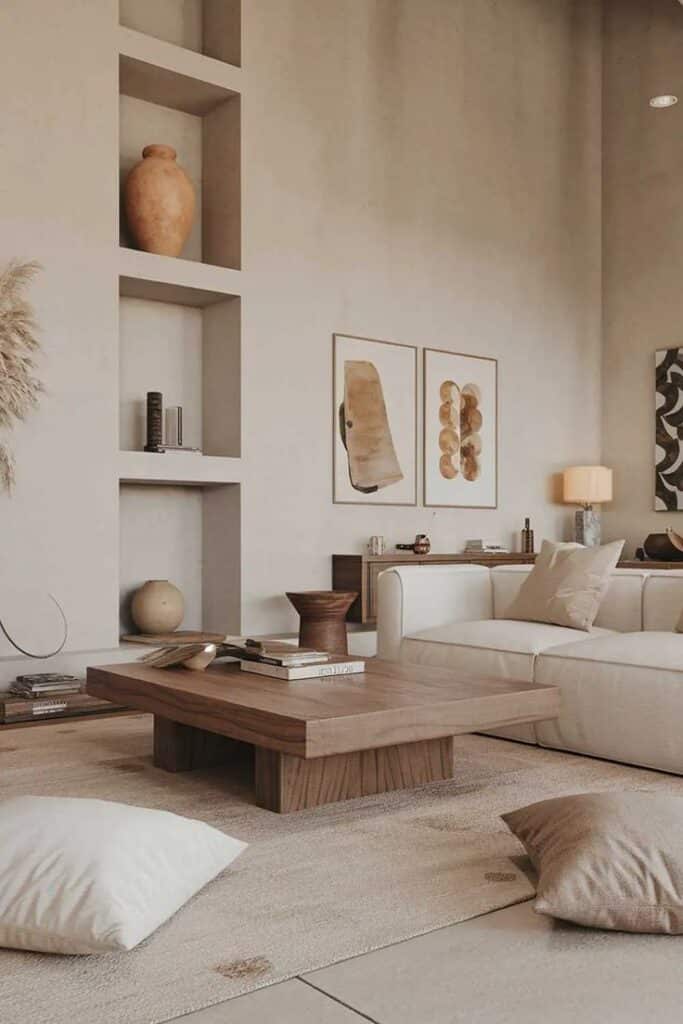

Scandinavian design emphasizes light, airy spaces with a cozy feel. It uses mostly white walls with soft pastel or gray accents. Natural light is maximized by keeping window areas clear and choosing light fabrics.
Wood furniture, often in light tones, adds warmth. The design combines function with beauty, incorporating simple storage solutions to keep the room tidy. Textiles like wool rugs and cushions create texture and comfort.
Traditional and Classic Elements


Traditional living rooms often include detailed wood furniture, rich fabrics, and ornate décor. Dark wood tones and warm colors like browns, reds, or golds give the room a formal and inviting feel.
Classic elements include rolled arms on sofas, patterned curtains, and framed art. Accessories like vases and lamps often have intricate designs. The layout usually centers around a fireplace or a main seating area.
Contemporary Trends
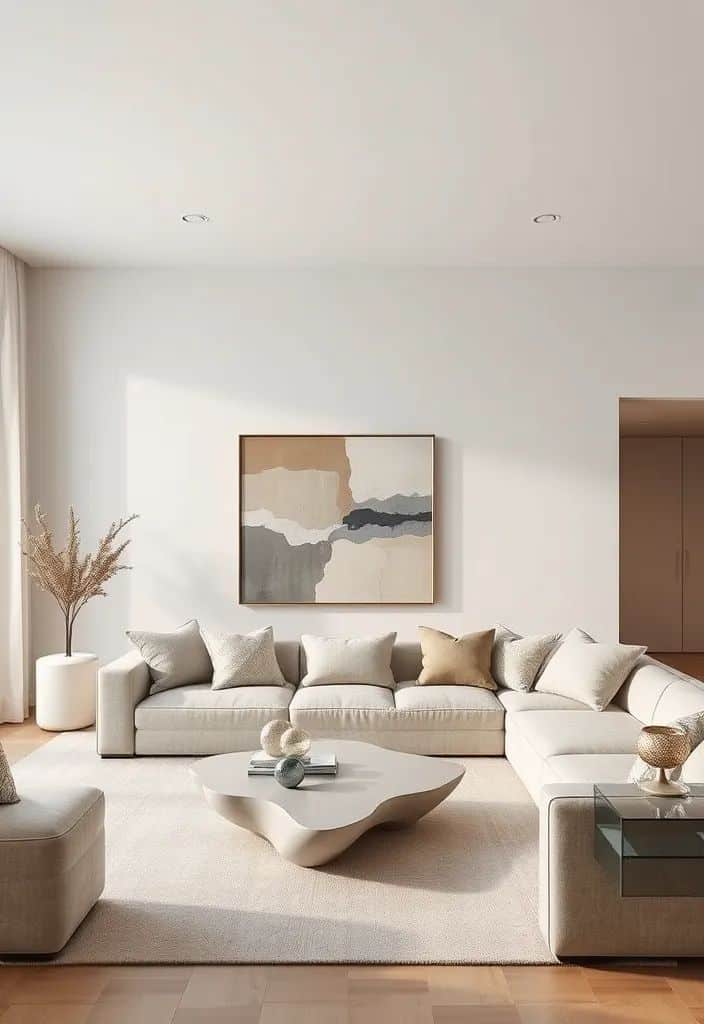

Contemporary styles reflect current design ideas with bold choices and creative use of materials. This style blends old and new by mixing modern furniture with vintage or industrial touches.
Colors are often neutral but can include pops of bright shades like teal or mustard. Textured walls, graphic rugs, and statement lighting fixtures make the space unique. The focus is on comfort and personal expression while keeping the space clean and organized.
| Style | Key Features | Common Colors | Materials Used |
|---|---|---|---|
| Modern and Minimalist | Clean lines, no clutter | White, gray, black | Glass, metal, polished wood |
| Scandinavian Inspiration | Light, airy, cozy textures | White, pastels, gray | Light wood, wool |
| Traditional and Classic | Ornate details, rich fabrics | Brown, red, gold | Dark wood, heavy textiles |
| Contemporary Trends | Mixed materials, bold accents | Neutral with bright pops | Mixed (modern and vintage) |
Furniture Selection and Arrangement
Furniture shapes the look and function of a living room. Choosing the right pieces and placing them well ensures comfort and good flow. Adding unique items can make the space more interesting without crowding it.
Choosing the Right Sofa and Seating
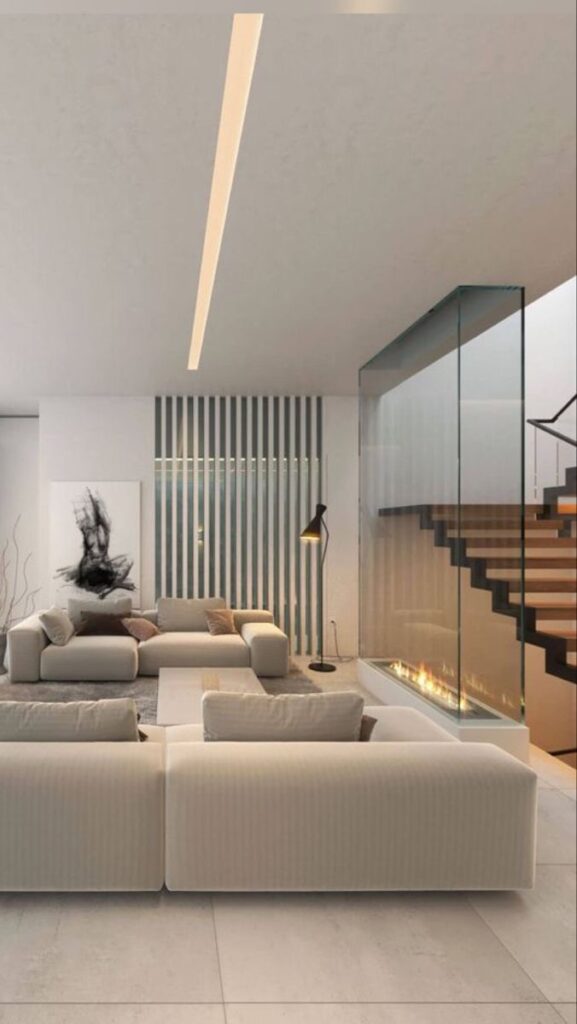
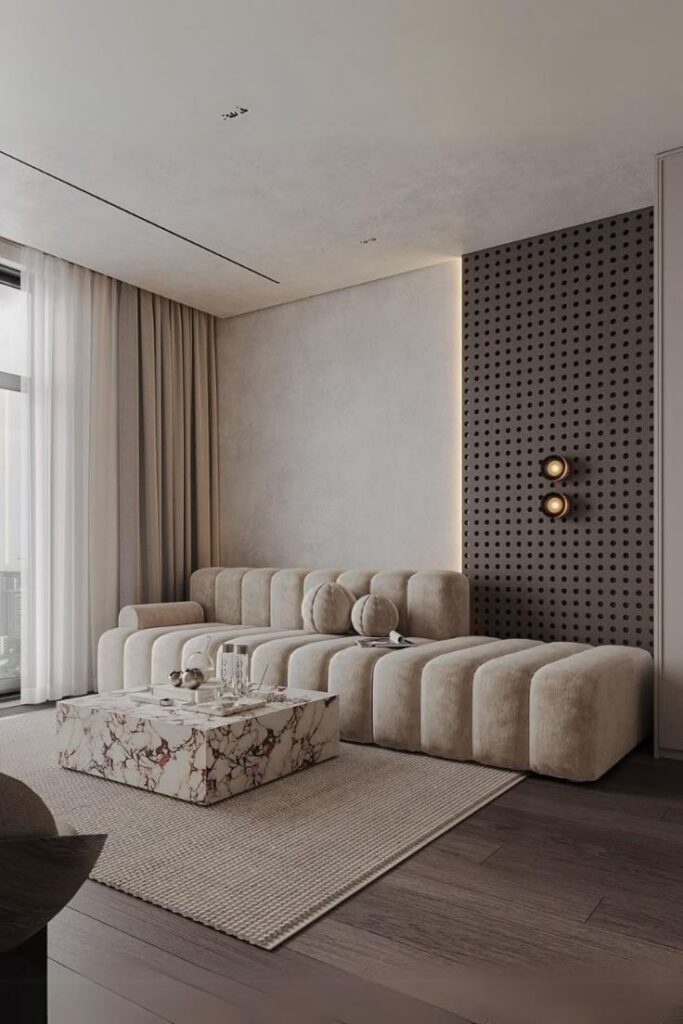
The sofa is the main seating piece and sets the room’s tone. It should fit the space without overwhelming it. A standard three-seater sofa works for most rooms but consider size and shape before buying.
Choose seating with durable materials like leather or tightly woven fabric for daily use. Color should match or complement the walls and floors. Neutral colors give flexibility, while bold colors create a focal point.
Add chairs or loveseats for extra seating. These pieces should balance the sofa, not compete with it. Avoid bulky furniture if the room is small. Focus on comfort with supportive cushions and proper height.
Optimal Furniture Placement

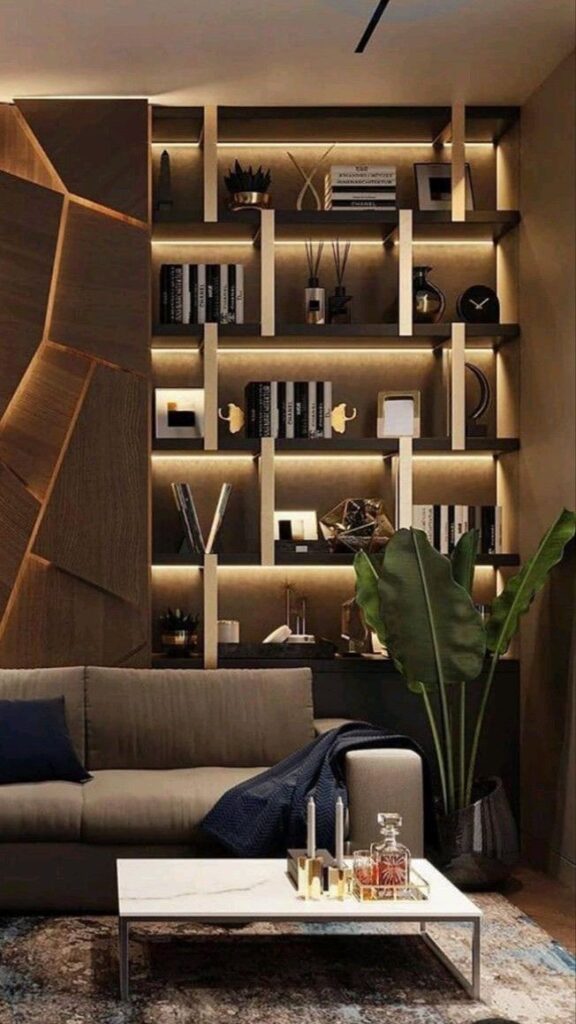
Arrange furniture to promote easy movement and conversation. Center the sofa facing the room’s main feature, like a fireplace or TV. Keep at least 18 inches between the coffee table and sofa for legroom.
Use rugs to define seating areas and anchor the furniture. Place smaller pieces like side tables within arm’s reach of chairs and sofas for convenience.
Avoid blocking natural light from windows. Leave clear walking paths around the room. Furniture should not crowd doorways or force awkward movements.
Incorporating Statement Pieces
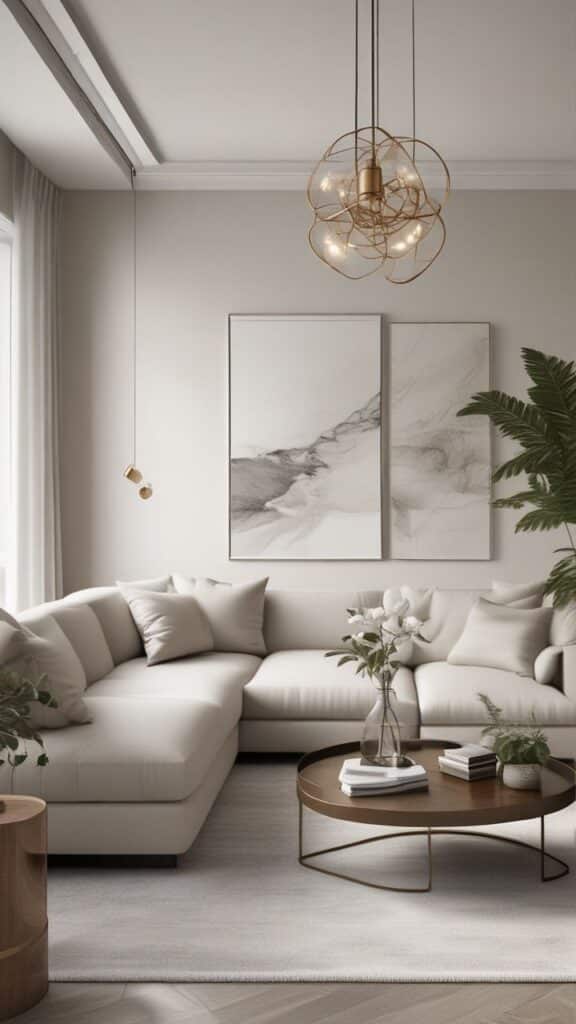
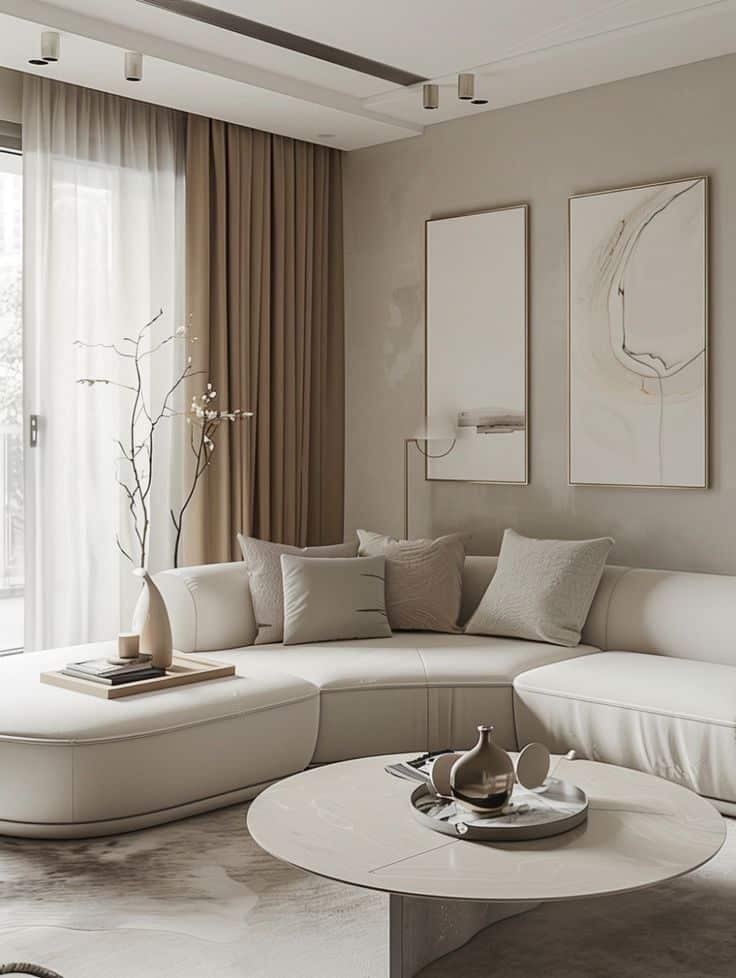
A statement piece adds personality to the room. It can be a bright-colored chair, an antique cabinet, or an oversized artwork. Pick one or two to avoid clutter.
Place statement items where they draw attention but do not block traffic. For example, a bold armchair in a corner or a unique coffee table in the center.
Balance statement pieces with simpler furniture to create harmony. This approach adds interest while keeping the room inviting and easy to use.
Maximizing Natural and Artificial Lighting
Good lighting balances natural and artificial sources to make a room feel bright and inviting. Using window treatments, layered lighting, and accent lights can improve how light works in the living room.
Window Treatments for Light Control
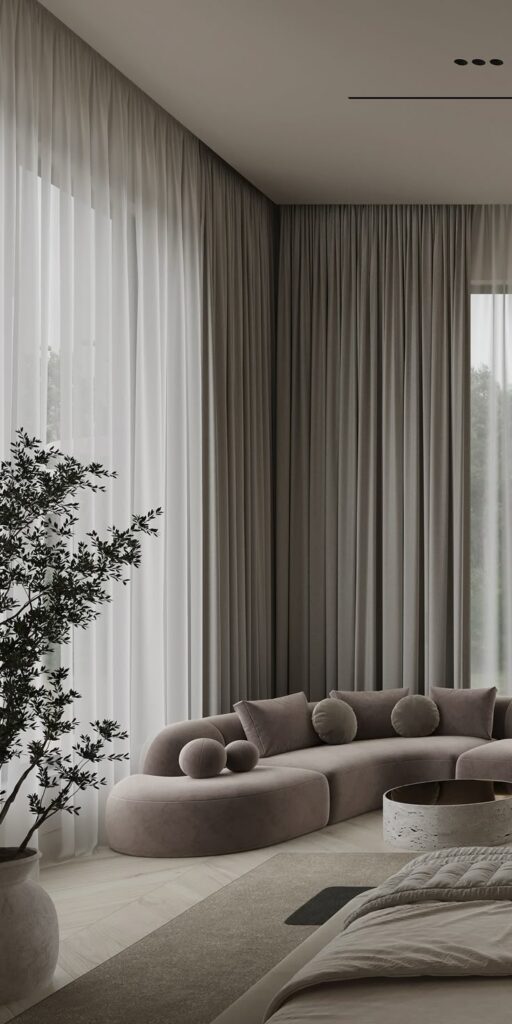

Window treatments help control how much natural light enters a room. Sheer curtains soften sunlight while allowing light to pass through. Blackout curtains block almost all light for privacy or to reduce glare.
Blinds and shades offer adjustable options. Venetian blinds can be tilted to change light angles. Roller shades can be raised or lowered to vary brightness.
Choosing light colors for curtains or blinds reflects more light into the space. Heavy fabrics tend to absorb light, making the room feel darker.
Layered Lighting Schemes

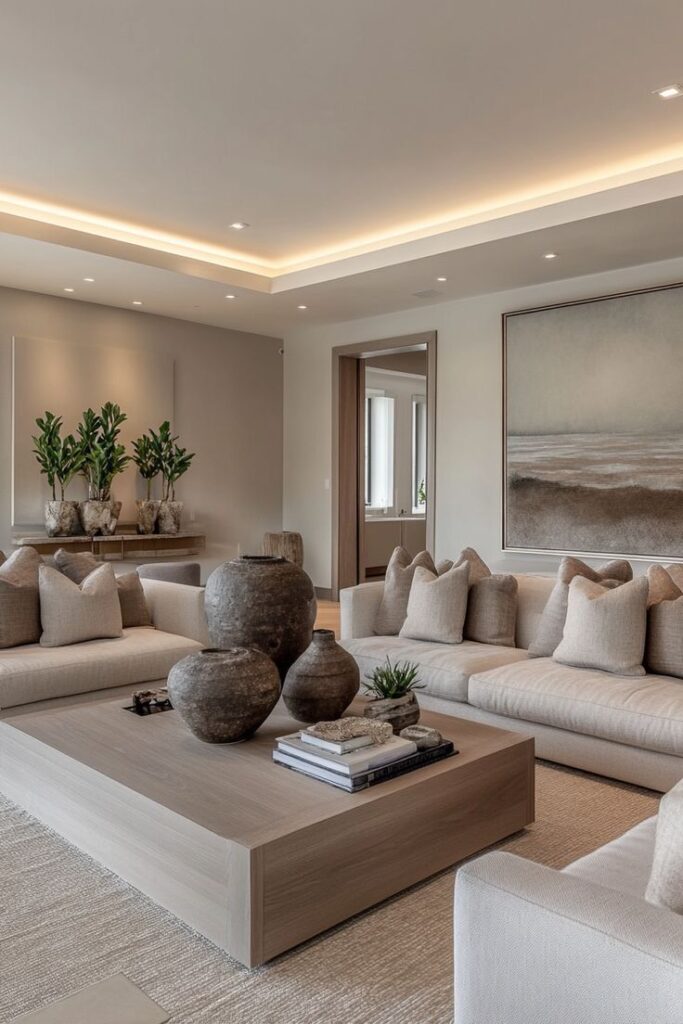
Layered lighting uses three types of light: ambient, task, and accent. Ambient light is the main source, like ceiling fixtures or chandeliers, providing overall brightness.
Task lighting focuses on areas for activities, such as reading lamps near sofas or desk lamps for workspaces.
Accent lighting highlights decorations or architectural features. Combining these three types helps balance brightness and reduce shadows. Dimmers allow control over light levels for different times or moods.
Accent Lighting Techniques


Accent lighting adds depth and interest to a room by highlighting specific objects. Spotlights or track lights can focus on art pieces or bookshelves.
LED strip lights behind TV units or under shelves create subtle glows. Table lamps with small shades cast soft light and add warmth.
Using warm white bulbs in accent lights creates a cozy atmosphere. Avoid bright, harsh lights in accent roles as they can distract or cause glare.
Incorporating Textures and Materials
Adding different textures and materials creates depth and interest in a living room. Using a mix of soft and hard surfaces helps balance comfort with style. Thoughtful choices can also highlight key areas and complement the room’s color scheme.
Selecting Rugs and Carpets
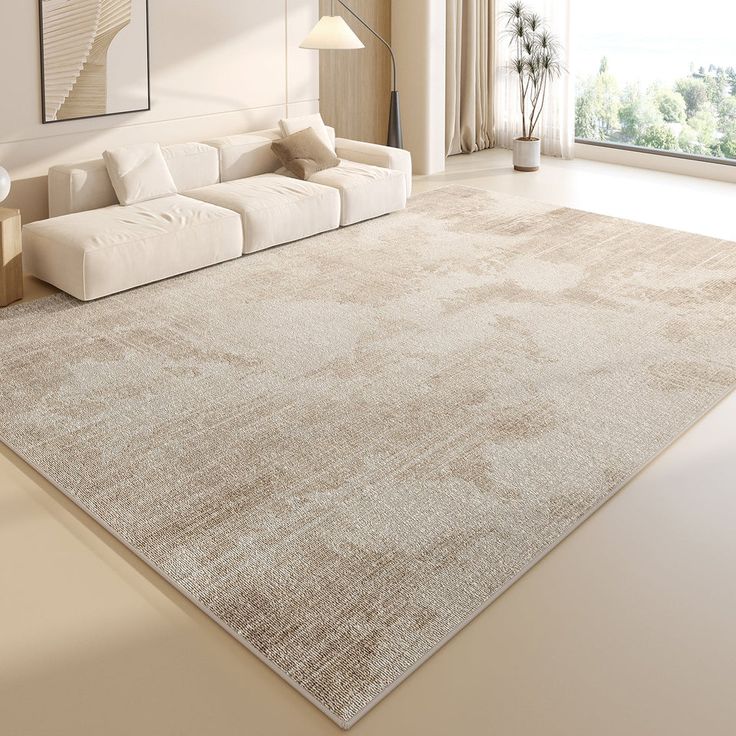

Rugs and carpets ground the furniture and define areas in an open space. Choosing the right size is important; a rug that fits under the front legs of sofas and chairs ties seating elements together.
Materials matter. Wool rugs are durable and hold color well, while synthetic fibers resist stains and are easier to clean. For a softer feel, plush rugs provide comfort underfoot. Patterns and textures like braided, shag, or flat-weave can either add visual interest or remain neutral, depending on the room’s design.
Mixing Fabrics and Upholstery
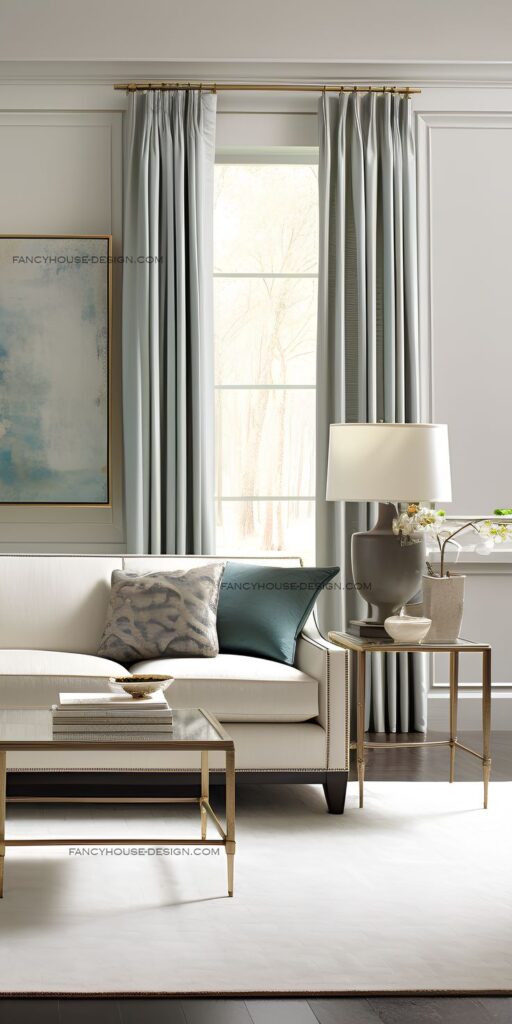
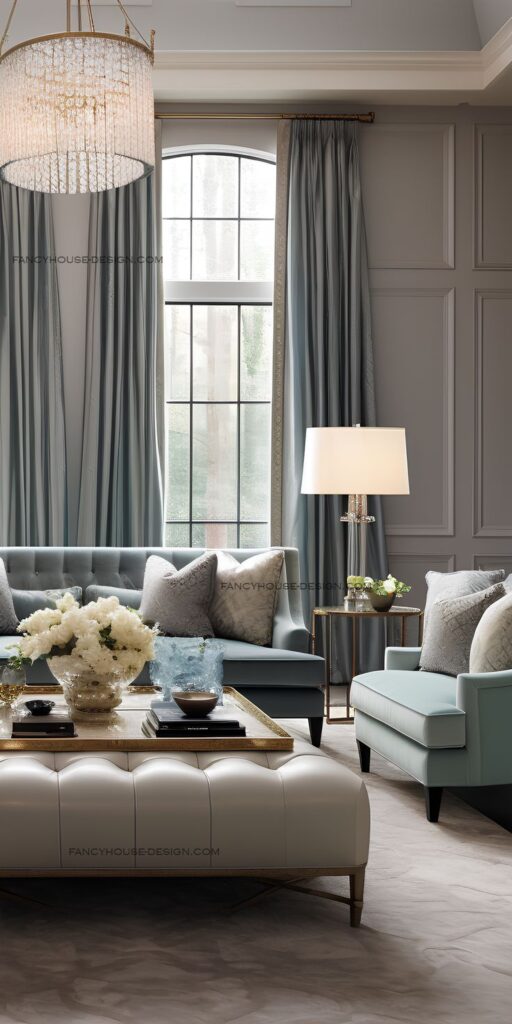
Combining fabrics involves contrasting textures and patterns without clashing colors. Velvet cushions add softness while linen upholstery brings breathability and a casual look.
Look for variation in weave and finish, like pairing smooth leather with nubby wool throws. It’s helpful to choose a dominant fabric for larger pieces and use smaller accessories to introduce texture variety. Always consider durability according to lifestyle needs, making fabrics both beautiful and practical.
Adding Wooden and Metallic Finishes

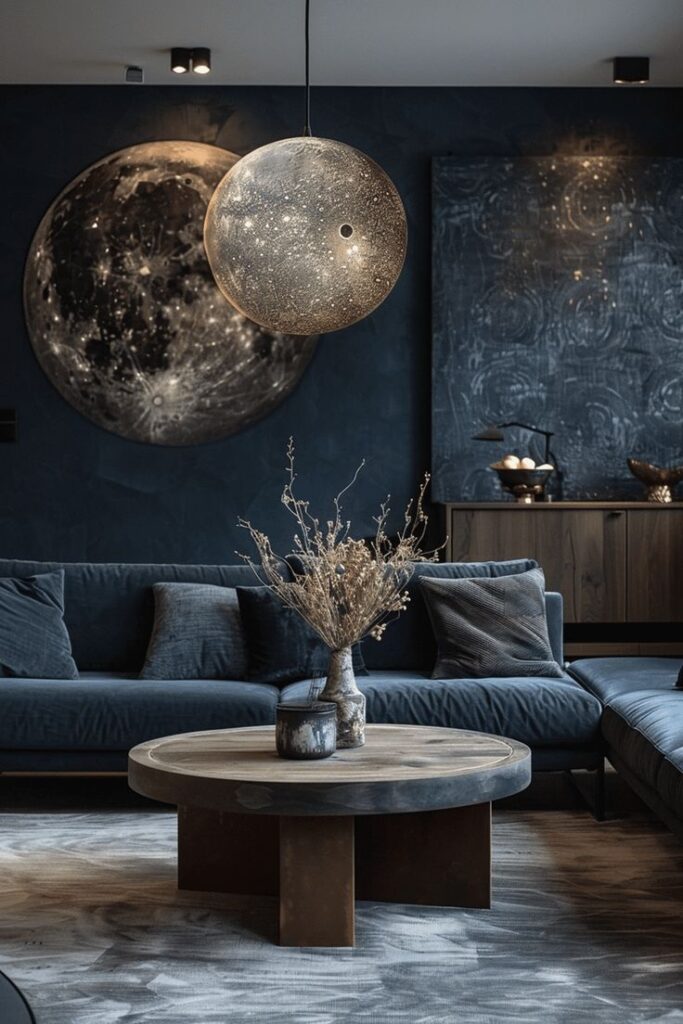
Wood adds natural warmth and structure. Light woods like oak or ash brighten the space, while darker woods such as walnut create richness. Mixing matte and polished wood surfaces can prevent monotony.
Metal finishes provide contrast with wood. Brushed brass or black iron work well on lamps, cabinet handles, and frames. Using metal sparingly avoids an overly cold look. Combining warm wood tones with cool metals balances texture and enhances modern or traditional decor styles.
Decorative Accents and Accessories
Decorative accents add personality and depth to a living room. Choosing the right pieces can enhance the style without cluttering the space. It is important to balance form and function when picking accessories.
Art and Wall Decor Selections


Art sets the tone of a living room. Large canvases or framed prints can anchor a seating area. A single bold piece works well in minimalist rooms, while galleries with smaller pieces add interest to plain walls.
When selecting art, colors should complement furniture and other decor. Abstract and nature-themed prints are versatile choices. Mirrors also help reflect light and make the room appear larger.
Avoid overcrowding walls. Choose a few meaningful pieces rather than many small, unrelated items. Consistency in frame style keeps the look tidy.
Styling Coffee Tables and Shelving


Coffee tables serve as a focal point and a practical surface. A simple tray can keep items organized. Books, candles, and small plants add texture and warmth.
Shelving should balance display items and storage. Group objects in odd numbers for a natural feel. Mixing books with decorative items like vases or bowls creates visual interest.
Keep shelves tidy. Avoid overfilling to prevent clutter. Use different heights and materials to add variety without chaos.
Utilizing Decorative Pillows and Throws


Pillows and throws are easy ways to update a living room. They provide comfort and color. Mixing patterns and textures adds depth without overwhelming the space.
Choose pillow sizes that fit the sofa or chairs comfortably. Layer solid colors with subtle patterns. Throws draped casually invite relaxation.
Seasonal swaps of pillows and throws can refresh the room’s look. Natural fabrics like cotton and wool work well year-round.
Maximizing Storage and Organization Solutions
Efficient use of space and smart furniture choices help keep a living room tidy. Clever storage options reduce clutter while adding style. The following ideas show how to blend function and design for better organization.
Built-In Storage Ideas


Built-in storage uses wall space to hold items like books, electronics, or decor. Shelves can be installed around windows or fireplaces to maximize unused areas. Cabinets with doors hide away messes, keeping the room neat.
Custom units can fit odd spaces, like under stairs or in corners, making the most of every inch. Floating shelves give storage without using floor space. Built-ins can be painted the same color as walls to blend in.
Bookshelves with adjustable shelves are good for different sized belongings. Adding hooks or cubbies inside cabinets helps organize small items like remotes and chargers.
Multi-Functional Furniture Options
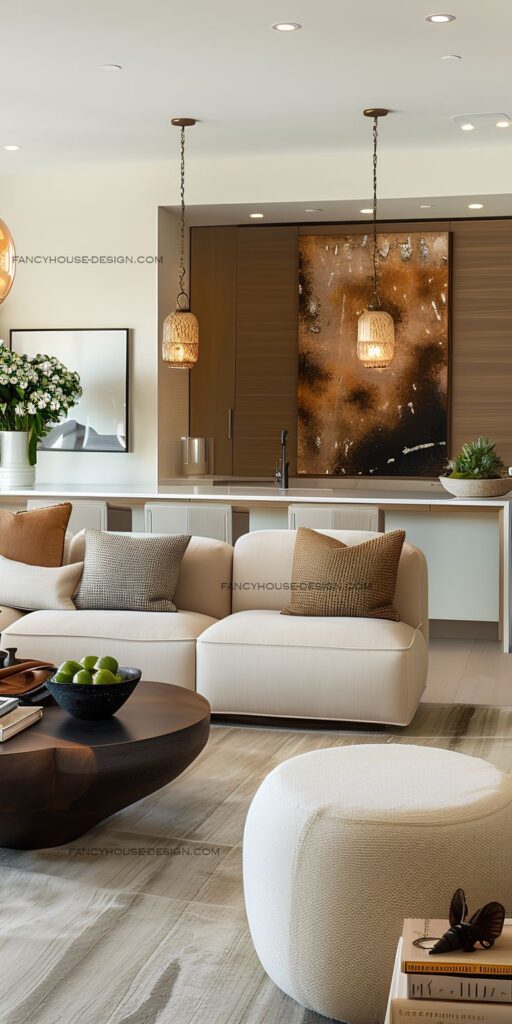
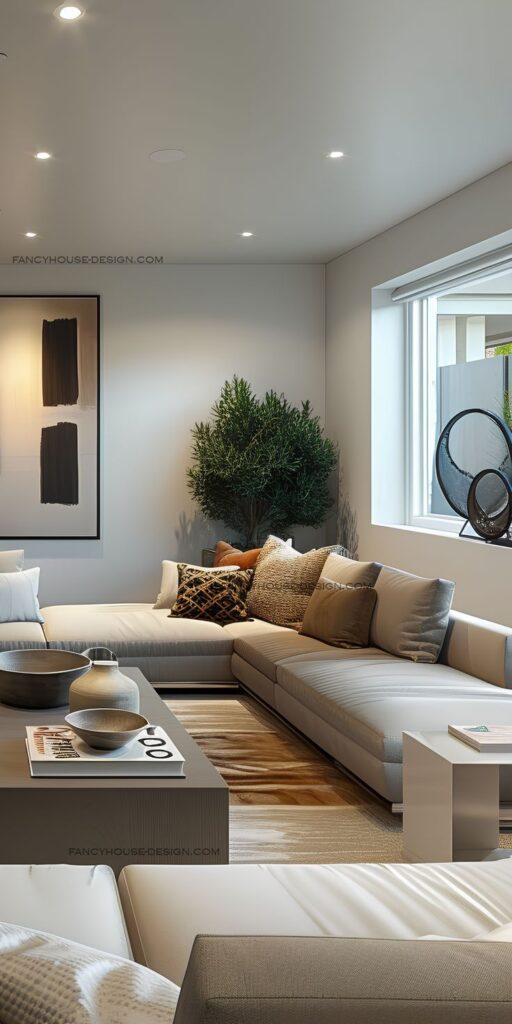
Furniture that serves more than one purpose saves space in small living rooms. Ottomans that open provide hidden storage for blankets or toys. Sofas with built-in drawers store extra pillows or magazines.
Coffee tables with shelves or compartments keep books and games close but out of sight. Fold-out desks or tables offer workspace that disappears when not used.
Look for pieces that combine seating and storage or tables with removable tops. Choosing multi-functional furniture reduces the need for extra pieces and keeps the room open.
Creating Inviting Atmosphere and Ambiance
A warm and welcoming living room depends on details that appeal to the senses. Adding natural elements and paying attention to smell and sound can make the space feel more comfortable and lived-in.
Personalizing With Plants and Greenery

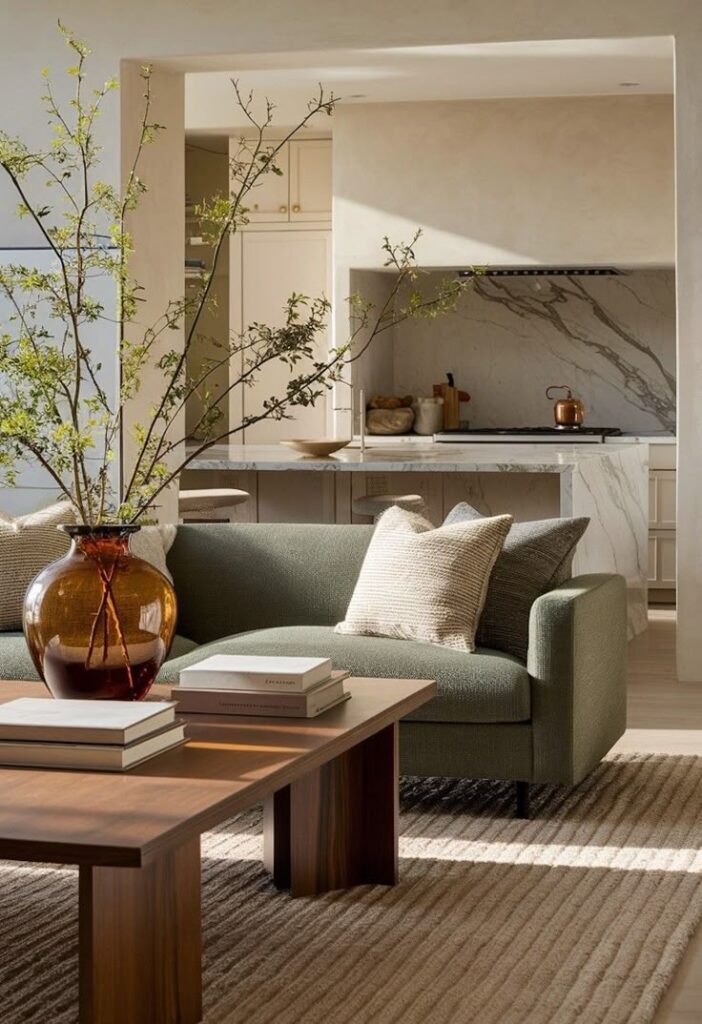
Adding plants brings life and color to the space. Small potted plants like succulents work well on shelves or tables. Larger plants such as fiddle-leaf figs or snake plants can fill empty corners and add height.
Plants improve air quality and create a calming effect. Choosing easy-care plants helps keep maintenance simple. Mixing plant types and container styles adds texture and interest.
Using a variety of greenery can balance the room’s colors and soften sharp furniture edges. Placement near natural light sources ensures plants thrive and enhances the natural feel.
Incorporating Scent and Sound Elements
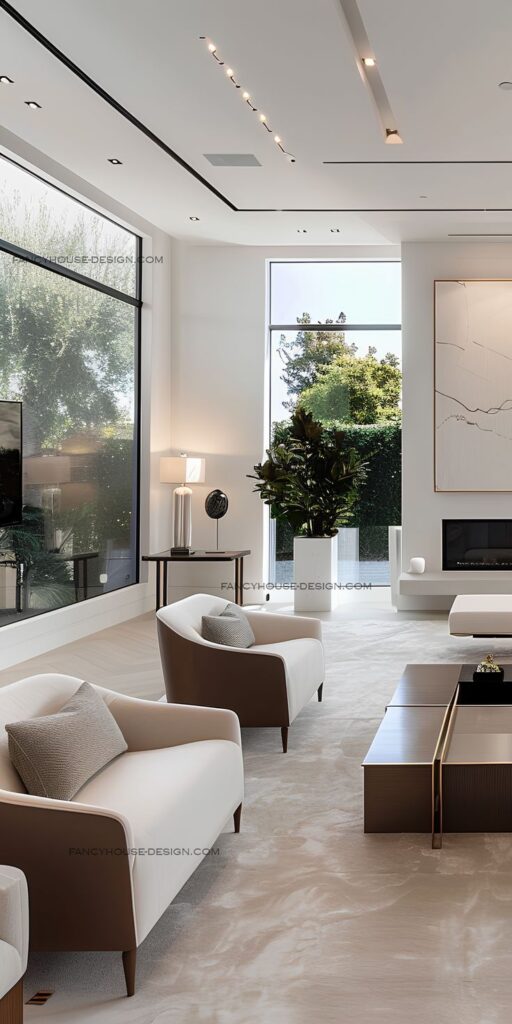
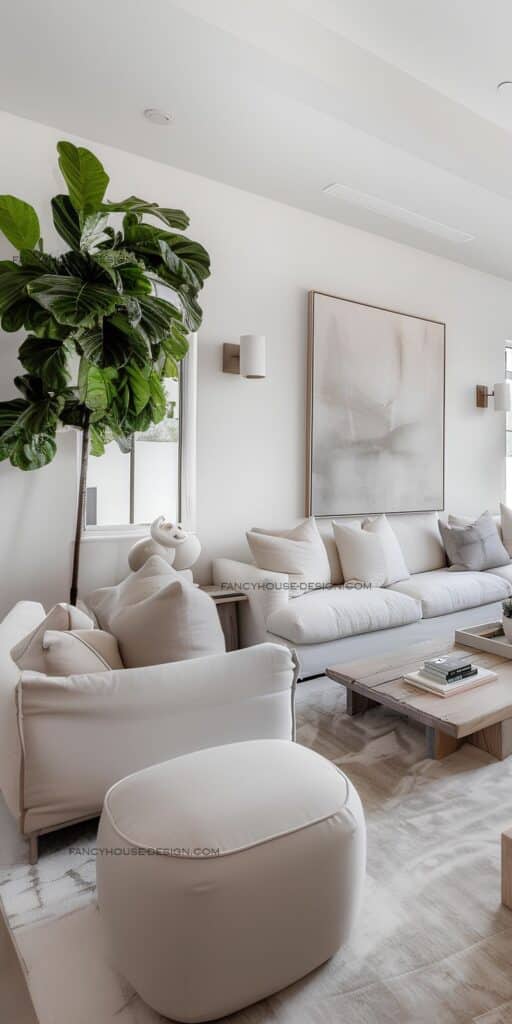
Scent affects mood and atmosphere in significant ways. Using candles with mild fragrances like lavender or vanilla can add subtle comfort. Essential oil diffusers offer a variety of scents and can be adjusted based on preference.
Background sounds help mask unwanted noise and create a relaxing environment. Soft instrumental music or nature sounds such as rain or birdsong are good options.
Sound machines or smart speakers allow control of volume and playlist. Keeping these elements subtle prevents distraction and promotes peacefulness.
Designing for Small Living Rooms
Small living rooms need careful planning to make them feel open and comfortable. Using certain colors, lighting, and smart furniture can help create a more spacious look without adding clutter.
Visual Tricks to Enlarge Space

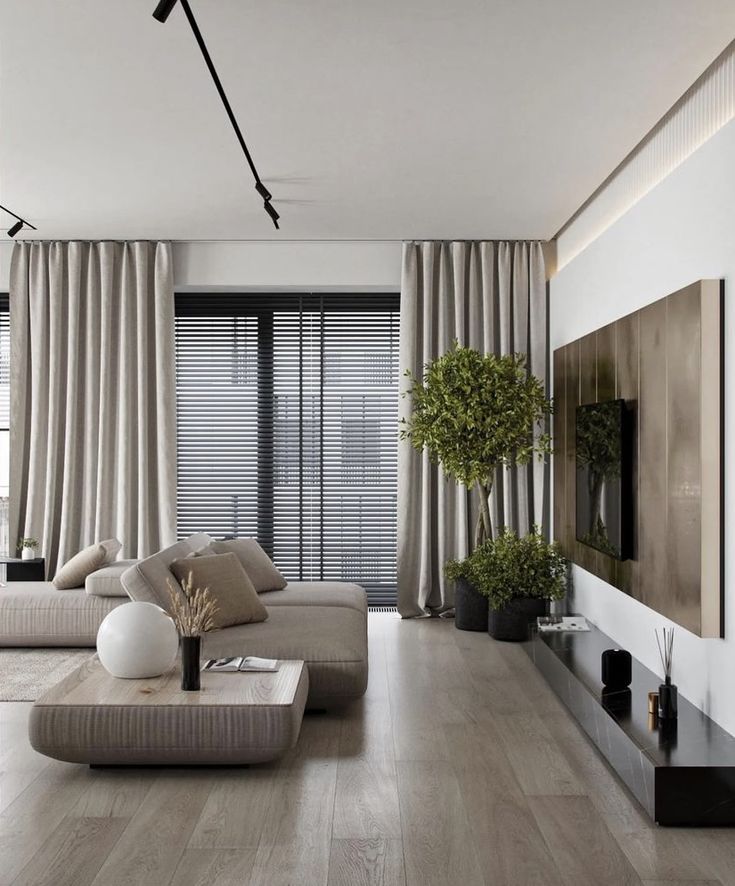
Light colors on walls and ceilings help reflect light, making a room look bigger. Mirrors placed across from windows boost natural light and add depth. Choosing curtains that match wall colors creates a smooth visual flow.
Keeping furniture away from walls leaves space to move. Vertical stripes or patterns draw the eye upward, making ceilings seem higher. Clear or glass furniture pieces reduce visual weight, so the room feels less crowded.
Space-Saving Furniture Choices
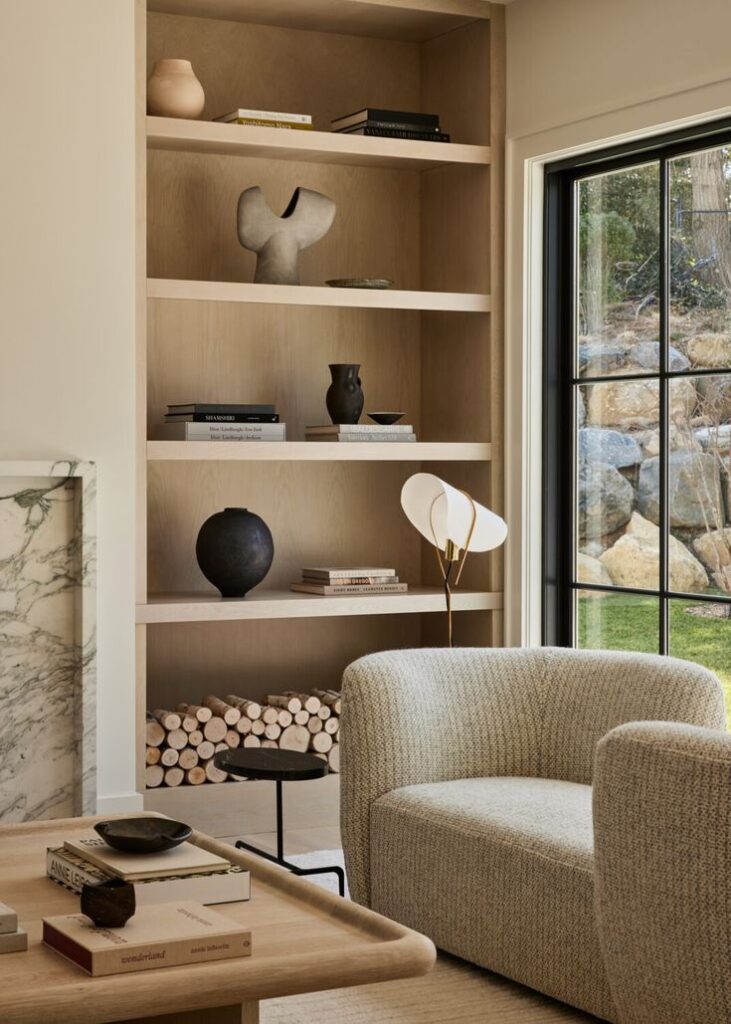

Multi-functional furniture works best. A sofa bed offers seating and sleeping space. Ottomans with storage hide clutter while providing a place to sit or rest feet.
Wall-mounted shelves free floor space and keep essentials organized. Folding or nesting tables adapt to needs without permanent bulk. Choosing smaller-scale furniture with slim legs helps maintain an open floor area.
Sustainable and Eco-Friendly Design Approaches


Sustainable living room design focuses on reducing harm to the environment. It uses materials that are natural, recycled, or easy to renew. This helps lower the home’s overall carbon footprint.
Choosing furniture made from reclaimed wood or bamboo is popular. These materials last long and come from fast-growing or reused sources. Also, organic cotton or wool for upholstery avoids harmful chemicals.
Energy efficiency matters too. LED lighting uses less power and lasts longer than regular bulbs. Large windows can bring in natural light, reducing the need for artificial lights during the day.
People often add plants to improve air quality and create a fresh atmosphere. Plants like snake plants and pothos are easy to care for and purify indoor air naturally.
Here is a simple list of eco-friendly choices for a living room:
- Furniture made from recycled or sustainably sourced wood
- Organic or natural fabric upholstery
- LED or energy-saving light bulbs
- Use of non-toxic paints and finishes
- Indoor plants for air purification
Using these approaches helps create a healthier space. It also supports the planet by lowering waste and pollution.
Seasonal Living Room Refresh Ideas
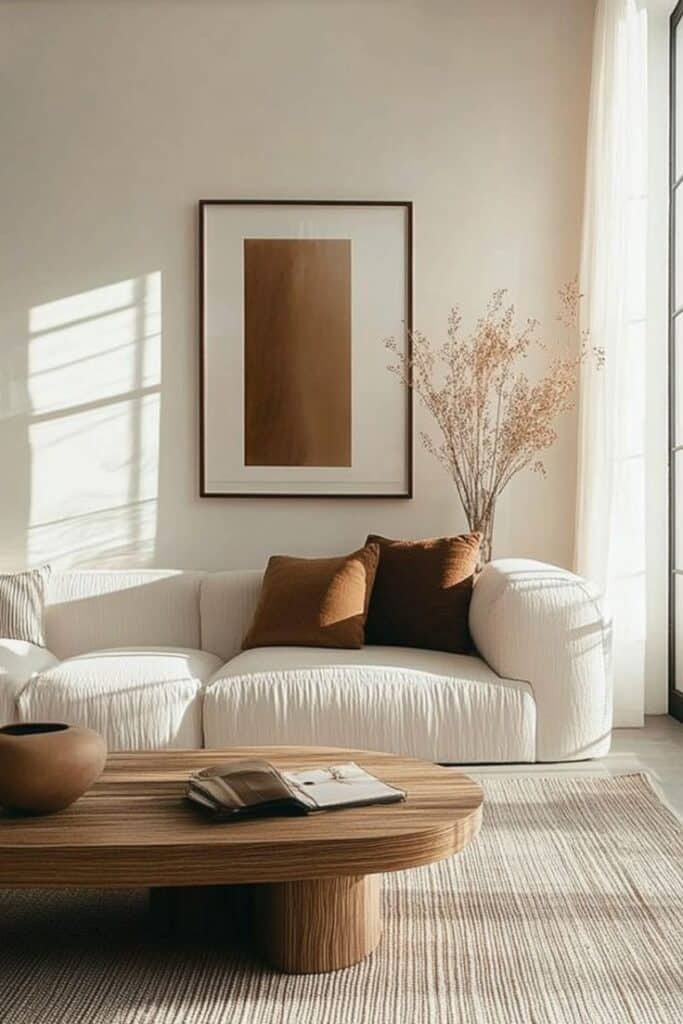
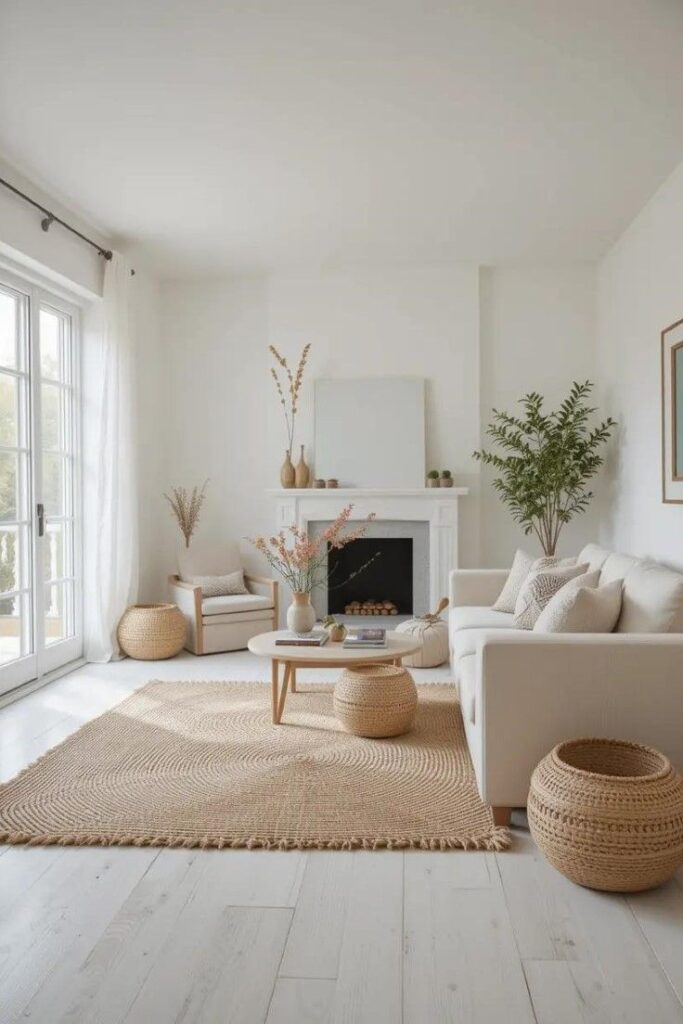
Changing a living room with the seasons can make the space feel fresh and inviting. Small updates like swapping pillows or throws can change the mood quickly.
In spring and summer, light colors and natural materials work well. Using linen cushions, cotton throws, and floral patterns can add brightness.
During fall and winter, warmer tones and cozy textures help create comfort. Think of wool blankets, plush rugs, and earthy colors like browns and deep reds.
Adding seasonal decor items such as candles, vases with fresh flowers, or decorative bowls with pinecones can enhance the theme. These pieces are easy to switch out as the months change.
A simple list of seasonal swaps:
- Spring/Summer: Light fabrics, pastel colors, fresh plants
- Fall/Winter: Warm fabrics, rich colors, cozy lighting
Rotating art or photos on the walls can also reflect seasonal moods. This method keeps the room feeling relevant without major changes.
Lighting adjustments help, too. Using dimmer lights or lamps with softer bulbs can suit colder months. Bright, natural light is better in warmer months.
- 1share
- Facebook0
- Pinterest1
- Twitter0

